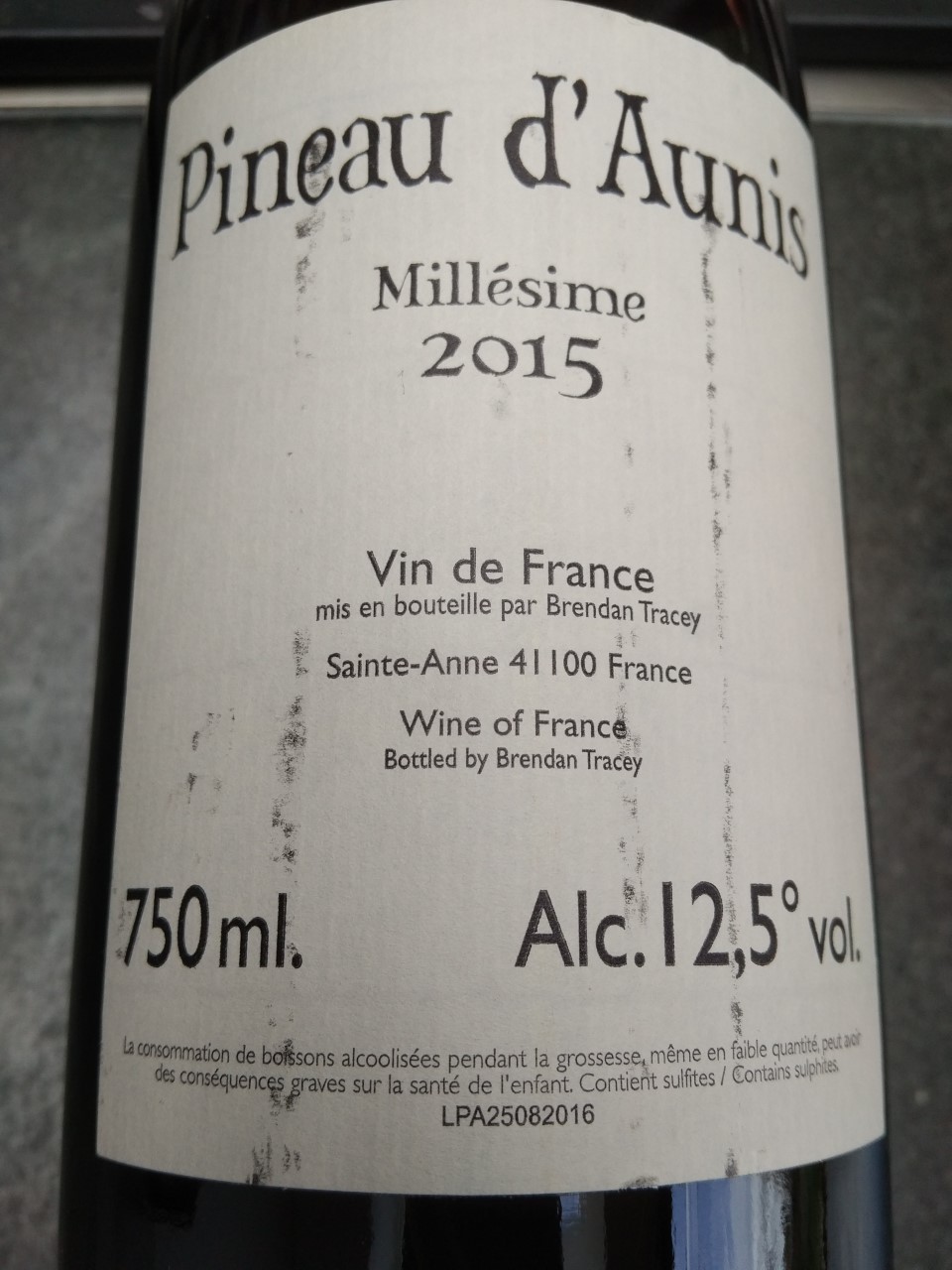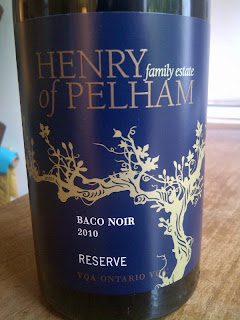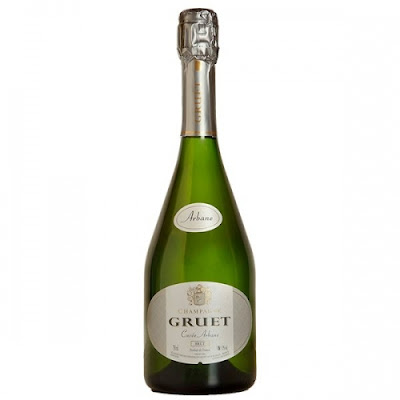Section 1. The conservative wine-lover.
We sent a bottle of Pineau D'Aunis to a client on his birthday with the request that he sent us his impressions. We knew he had never tasted this grape despite being French and a wine connoisseur.
He answered;
You asked our verdict about the wine which we opened yesterday with friends... Honestly it was just terrible ! (laughs). We couldn't drink it. You should never buy this one again ! But please don't worry : we keep the fondest memories of the wonderful chocolates !
Pineau D'Aunis. 2015. Vin de France. Vendome, Loir et Cher. Brendan Tracey. 12.5%

We thought it might be interesting to taste a few wines which would probe the limits of what a group of friends might define as wine.
Encouragingly they found this wine rather to their liking which made understanding the Frenchman's reaction a bit difficult.
Next:
Champagne Gruet brut NV, Cuvee Arbane (100% Arbane). Buxeuil. 12%
This Champagne is 100% Arbane, the most obscure of the 7 permitted Champagne grapes (Pinots Noir, Blanc and Meunier, Chardonnay, Petit Meslier and Semillon are the others). There is less than 1 hectare left of Arbane and those vines are very old. Jancis Robinson may be right in saying Arbane is perhaps not the future as far as Champagne is concerned but I hope this bottle is as pleasurable as we have found Arbane to be in the past. Diversity is surely something to which we can subscribe?
As expected, this went down very well. Tasters found individuality and pleasurableness. Not all were aware of Arbane and few had tasted it in purezza. A good start.
* * *
Section
2. Varieties bred to combat vine diseases that might have destroyed
Vitis Vinifera and left us with these as alternatives.
Uhudler. Trummer, Stegersbach, Burgenland. (Clinton, Concord, Delaware, Isabella?) 10%
Before we get too judgemental about Pineau D'Aunis and other 'Cepages modestes' we should remember what we might have been drinking had a solution to the problem of Phylloxera not been found and had Vitis Vinifera been wiped out 100 years ago.
This really put the cat among the pigeons. It is not likely any of our wine buffs had ever tasted wine from the old American varieties, Most remarkable, one thought was the strong strawberry taste,

Henry of Pelham Baco Noir 2015. Vqa Ontario. 13%
Phylloxera isn’t the only threat to grapes. Shortly before that plague, Powdery Mildew had become entrenched in vineyards. The French accused the British and others saw America as the origin. Baco Noir was obtained in 1902 by crossing Folle Blanche with a Vitis Riparia called Grand Glabre possibly with Vitis Riparia ordinaire. The use of Vitis Riparia instead of Vitis Labrusca avoided the foxy flavours of the above. European plantings of Baco Noir have dwindled but it still thrives in North America, especially Ontario.
Far more like wine than Uhudler. Nonetheless everyone ran for the spitoon and later this may have been one to have been poured down the sink.
* * *
Section 3, other crossings and hybrids for different purposes.
Turan ‘Mocus’ Losonci. 2015. Gyongyos, ‘Terra Hungarica.’ 2015.
Turan is an extreme test of one’s definition of wine. Can it have been made with grapes one is tempted to ask. The ultimate Marmite wine? It is a 1964 hybrid from Bikaver 8/Kadarka cross and Gardonyi Geza which in turn is a Menoire/Csaba Gyongye cross although to what end is not clear. It is used in the Eger region in Egri Bikaver blends and has been planted in British Columbia where it is known as Agria.
NB. In English, Mocus = a medical condition related to alcohol abuse (!)
It had been hoped that this would have sprked a debate as to how to define wine and whether this might make it under any definition but everyone rather liked it, unique though its red-muscat taste is.
* * *
Section 4. Wines from Vinifera varieties without any crossing or hybridisation.
Glinavos Sparkling wine 'Pailiokairisio.' Ioannina, Epirus, Greece. (Vlahiko and Debina). 10.5%
Made from two uncommon Greek varieties (a red and a white respectively), Paliokairisio (Old Times) doesn't resemble any other wine or fit into any category really. People say they enjoy it but wouldn't know when to drink it or what to drink it with. Should that mean it ought not to exist?
As soon as this was poured into a glass it rased a laugh. Tasters had heard of White wine, Red wine and Orange wine, but Brown wine? they were flummoxed by the strong cidery taste and again we had something they didn't call wine.

Szeremi Zold. 2015. Maurer. Hajdukovo, Vojevodina. Serbia. 11%
This is another extremely rare variety (Syrmia Green) from another great producer, Oszkar Maurer, devoted to working with rare local varieties (you won’t find Szeremi Zold in ‘Wine Grapes’). His estate, now in Serbia is just over the border from Hungary. Syrmia is a fertile region of the Pannonian Plain which lies between the Danube and the river Sava. We suggested that this is a variety, although individual, even our French client might not have too much trouble with. We think it proves that a variety can be great as well as obscure.
The company gave a firm thumbs up to this one.
Mando. 2015. Bodegas Abadal, Bages (Catalunya). 12.5%
Mando or Mandon proves there are many other little known varieties which have great merit and would not frighten the horses. In 2008 there was only 1 hectare left but there have been new plantings since.
This was also a hit.

Abouriou 2015. Terre d’Abouriou. Cote du Marmandais. Cave du Marmandais, Vignobles du Sud-Ouest. 12.5%
Abouriou was actually unknown until 1882 when a man called Numa Nauge presented a chance seedling found by a farmer 40 years previously growing up the wall of a castle in the Lot-et-Garonne. By the 1950s there were over 600 ha. in France and a few in California. In 2008 there remained 338 ha. In France.
Several well known grapes owe their popularity today to individuals. Godello on the verge of extinction - down to several hundred vines in the 1970s when Horacio Fernandez and Luis Hidalgos reversed the tide.
Michel Aimé Pouget brought cuttings of Malbec from France to Argentina in 1868 but as late as the 1980s the variety had declined to 9,000 ha. and had dwindled in Bordeaux to 1% having been the dominant variety in the mid 19th century. The revival in Argentina was thanks to the Italian winemaker and consultant Roberto Cipresso and subsequently to others including Nicola Catena Zapata. Only since 1995 has it been the predominant grape in Argentina. Now Cahors – the original home of the variety - markets itself as Malbec.
Abouriou is presently championed by the Cave du Marmandais co-operative and the Couillaud brothers in the Loire Atlantique.
We can’t imagine why this variety hasn’t caught on yet. We might send a bottle to mour French friend for his next birthday. If he likes it who knows?
Abouriou was another hit to end up with.





No comments:
Post a Comment